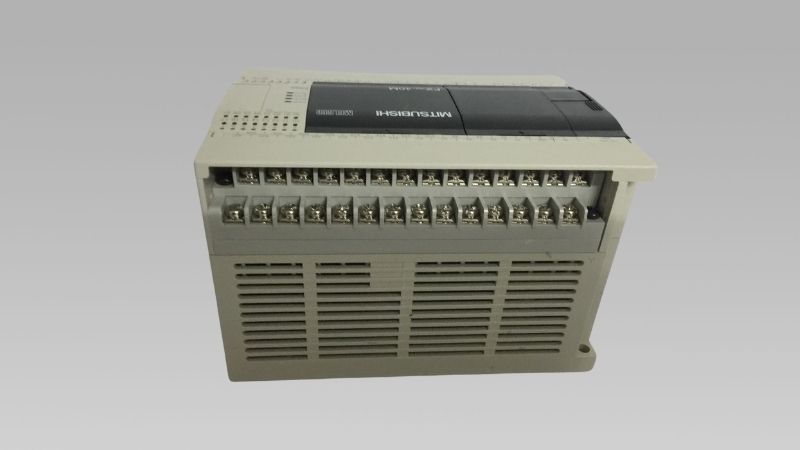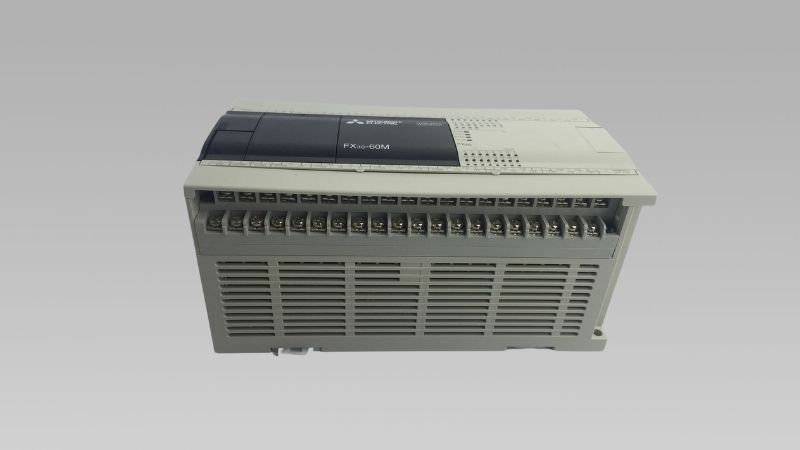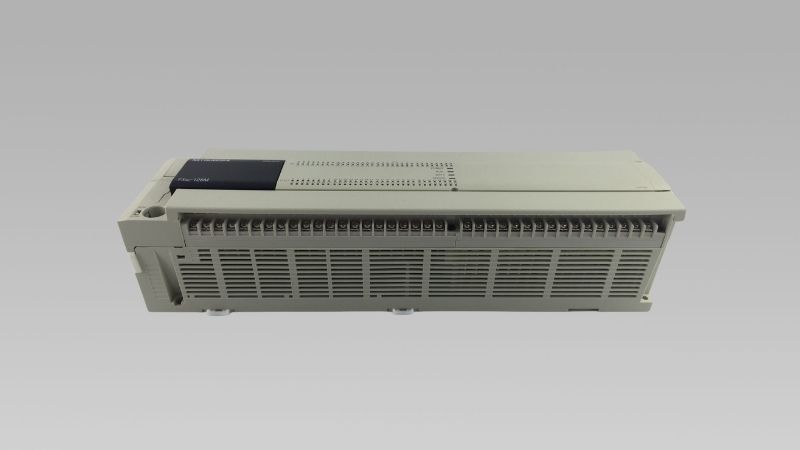Buying Guide for Mitsubishi PLCs
Selecting the appropriate Mitsubishi PLC requires understanding your project’s needs, such as input/output requirements, processing speed, and communication capabilities. By matching these needs with the specifications of different Mitsubishi PLC models, you can choose the most suitable product. In this guide, I will walk you through the key factors to consider when purchasing a Mitsubishi PLC.
Índice
Keep reading as we delve into each aspect to ensure you make an informed decision and avoid common pitfalls.
What Key Factors Should You Consider When Choosing a Mitsubishi PLC?
When selecting a Mitsubishi PLC, several critical factors need to be considered. Understanding these factors will help you make a wise decision that aligns with your project’s requirements.
Understand Your Project Needs
Before diving deep into specifications, take a step back and analyze what your project truly requires. Ask yourself:
- What is the scale of the project? Is it small, medium, or large?
- What are the control requirements? Simple logic control or complex process control?
- Do you need to comply with specific industry standards or regulations?
By answering these questions, you’ll have a clearer understanding of the type of CLP you need.
Input/Output (I/O) Requirements
I/O requirements are fundamental in PLC selection. Determine:
- Number of inputs and outputs: Count the number of devices that need to be controlled or monitored.
- Type of signals: Are you dealing with digital (on/off) signals, analog signals (variable voltage or current), or both?
- Special I/O modules: Do you need high-speed counters, temperature inputs, or positioning modules?
Selecting a PLC that meets your I/O requirements ensures seamless integration with your hardware.
Processing Speed and Memory
The complexity of your control program affects the required processing speed and memory capacity.
- Processing speed: For applications that require rapid response, you must choose a PLC with a faster CPU.
- Capacidade de memória: A larger memory allows for more extensive and complex programs. If your application involves data logging or complex algorithms, consider a PLC with ample memory.
How Do I Determine the Appropriate PLC Model for My Project?
Mitsubishi offers a range of PLC models suitable for various applications. Here’s how to determine the right model for you.
FX Series—Compact and Cost-Effective
The FX Series is Mitsubishi’s entry-level PLC, suitable for small to medium-sized applications.
- Ideal for: Simple automation tasks, small machinery, and equipment control.
- Características: Integrated I/O, basic networking capabilities, easy programming.
- Vantagens: Compact size, ease of use, affordable price.
L Series—Flexible and Scalable
The L Series bridges the gap between the FX Series and the Q Series.
- Ideal for: Medium-sized applications requiring flexibility and scalability.
- Características: Modular design, expandable I/O, advanced networking options.
- Vantagens: Modules can be added as needed, suitable for growing projects.
iQ-R Series—High Performance
The iQ-R Series (an upgraded version of the original Q Series) is designed for large and complex applications.
- Ideal for: Complex process control, large machinery, and factory automation.
- Características: High-speed processing, large memory capacity, multi-CPU configurations.
- Vantagens: Superior performance, advanced control capabilities, extensive networking options.
By matching your project needs with the features of each series, you can choose the most suitable model. For detailed specifications, please refer to Mitsubishi’s PLC Product Catalog.
What Are the Differences Between the Various Mitsubishi PLC Series?
Understanding the differences between the series helps you make an informed choice.
Hardware Differences
- Form factor: The FX Series features a compact design with fixed I/O, while the L Series and iQ-R Series offer modular designs.
- Processing capability: The iQ-R Series CPUs are faster and support more complex tasks.
- Expansion options: The L Series and iQ-R Series allow extensive expansion by adding modules.
Software and Programming
- Programming software: All series can be programmed using Mitsubishi’s GX Works series software.
- Funcionalidade: The iQ-R Series supports advanced functions like motion control, redundancy, and safety modules.
Networking and Communication
- FX Series: Basic communication options like RS-232 and RS-485.
- L Series: Enhanced networking capabilities, supporting Ethernet and CC-Link.
- iQ-R Series: Comprehensive communication options, including Ethernet, CC-Link IE, etc.
How Do Input/Output Requirements Affect My PLC Selection?
Your I/O requirements directly impact the PLC model and configuration.
E/S digitais
- Usage: Controlling on/off devices like motors, lights, and switches.
- Considerations: Ensure sufficient I/O points and voltage compatibility (e.g., 24VDC, 110VAC).
E/S analógica
- sage: Handling variable signals from sensores measuring temperature, pressure, flow, etc.
- Considerations: Resolution and accuracy requirements, signal types (0-10V, 4-20mA).
Specialized I/O
- High-speed counters: For applications requiring precise counting or timing.
- Positioning modules: For motion control applications like servo motores.
Expansion Modules
If the initial I/O is insufficient, check whether the PLC supports expansion modules. Modular PLCs like the L Series and iQ-R Series allow you to add I/O modules as your project grows.
What Communication Capabilities Do Mitsubishi PLCs Offer?
Effective communication is crucial for modern automation systems.
Network Protocols
- Ethernet: Standard networking for easy integration and high-speed data transmission.
- CC-Link/CC-Link IE: Mitsubishi’s proprietary network for real-time control.
- Modbus TCP/IP: Widely used protocol for communication with various devices.
Remote Connectivity
- Web servers: Some PLCs offer built-in web servers for remote monitoring.
- VPN access: Secure remote access for programming and troubleshooting.
Compatibility with SCADA and HMI
Ensure that the PLC can communicate seamlessly with your Supervisory Control and Data Acquisition (SCADA) systems and Human-Machine Interfaces (IHM). This allows for centralized control and monitoring.
Where Can I Find Reliable Sources to Purchase Genuine Mitsubishi PLCs?
Purchasing from reputable suppliers is essential to avoid counterfeit products.
Authorized Distributors
- Official channels: Check Mitsubishi’s official distributor list to find authorized sellers in your region.
- Benefits: Guaranteed genuine products, warranties, and after-sales support.
Suppliers with Large Inventories
- Kwoco: As a supplier with a large inventory of products, we offer immediate availability and fast shipping.
- Vantagens: Reduced delivery times, competitive pricing, comprehensive product range.
How Can I Avoid Purchasing Counterfeit or Refurbished Products?
Counterfeit products pose risks to the success and safety of your project.
Tips to Avoid Counterfeits
- Buy from trusted suppliers: Stick to authorized distributors or reputable suppliers like us.
- Check packaging and labels: Genuine products have high-quality packaging and clear labels.
- Request documentation: Certificates of origin or conformity can verify product authenticity.
Risks of Counterfeit Products
- Performance issues: Inferior components may lead to malfunctions.
- Safety hazards: Non-compliant products can pose safety risks.
- No warranty: Counterfeit products are not covered by manufacturer warranties.
How Does Kwoco Enhance Your Purchasing Experience?
At Kwoco, we are committed to providing exceptional service to our customers.
One-Stop Purchasing Service
We offer a comprehensive range of Mitsubishi PLCs and related automation products, allowing you to find everything you need in one place easily.
Fast Quotation and Delivery
Understanding the urgency of your project, we provide quick quotations and ensure timely delivery.
Technical Expertise
Our team of experienced engineers can provide technical support and customized solutions to meet your needs.
Garantia de qualidade
We guarantee that all products are brand new and original, ensuring performance and reliability for your peace of mind.
Customer-Centric Philosophy
Building long-term relationships with our customers is our top priority. We strive to exceed your expectations through high-quality service and support.
Potencialize seus projetos com PLC Omron, Mitsubishi, Schneider novos e originais – em estoque, prontos agora!
Conclusão
Choosing the right Mitsubishi PLC is a critical decision that can significantly impact the success of your project. By carefully considering your project’s specific requirements and understanding the features of different PLC models, you can make an informed choice.
Remember, purchasing from a reliable supplier like Kwoco ensures you receive genuine products and enjoy exceptional service and support. For more information, please feel free to contact us at [email protected] or visit our website www.kwoco-plc.com. We are ready to assist you every step of the way.
Contate-nos
Basta preencher seu nome, endereço de e-mail e uma breve descrição de sua consulta neste formulário. Entraremos em contato com você em até 24 horas.
Você também pode achar esses tópicos interessantes
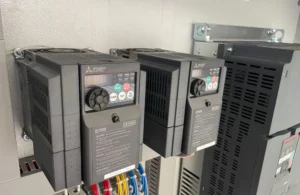
10 códigos comuns de alarme de servo da Mitsubishi e soluções: solução de problemas facilitada!
10 códigos e soluções comuns de alarme de servo Mitsubishi: solução de problemas facilitada! Na automação industrial, os servo drives são essenciais, e a Mitsubishi
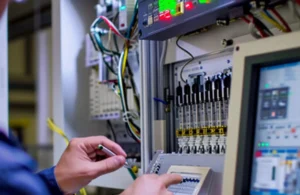
Ethernet vs Modbus: qual fornece mais energia para sua fábrica?
Imagine que você é um gerente de compras selecionando um protocolo de comunicação para conectar vários dispositivos em sua linha de produção. Se você escolher o errado, isso pode atrasar o projeto e afetar a qualidade do produto. Então, qual protocolo atende melhor às suas necessidades: Ethernet ou Modbus?
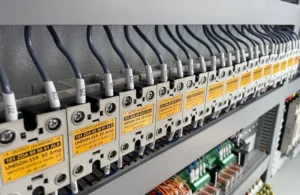
CLP de relé vs. CLP de transistor: qual deles atende às suas necessidades de controle?
Relay PLC vs. Transistor PLC: Which One Fits Your Control Needs? In the world of industrial automation, selecting the right

